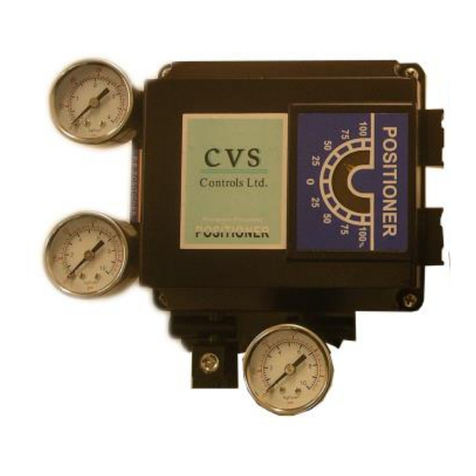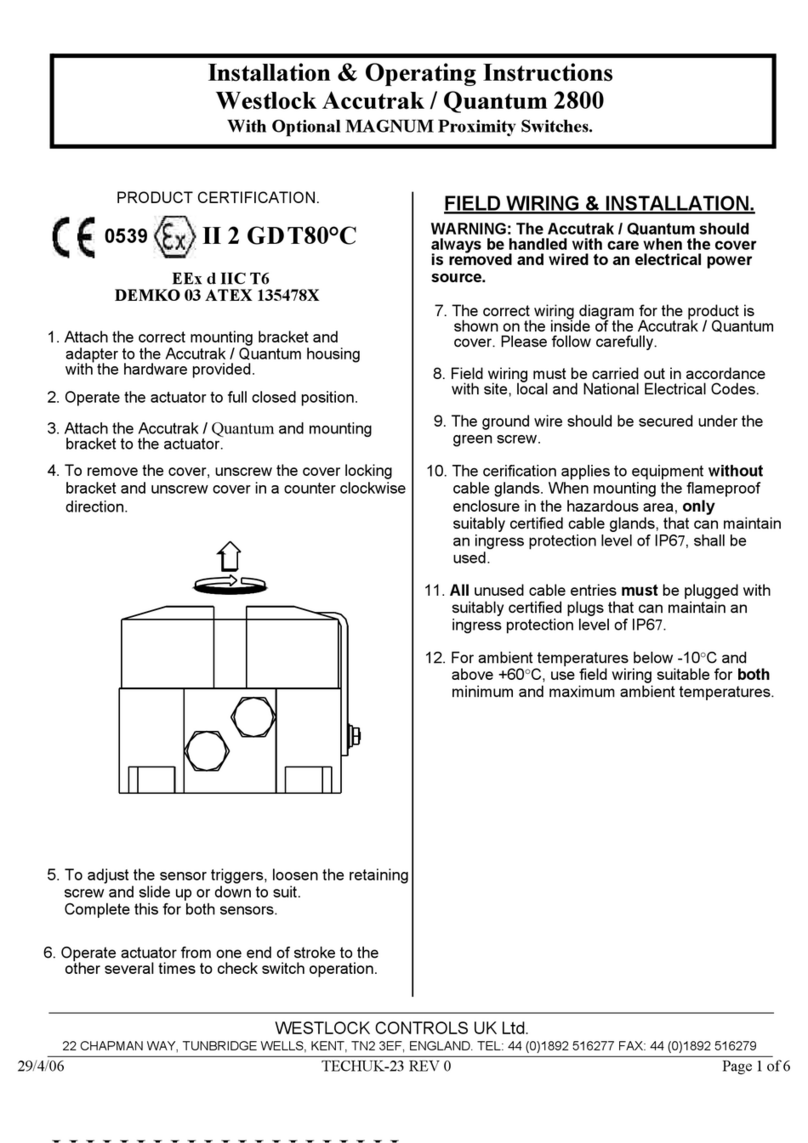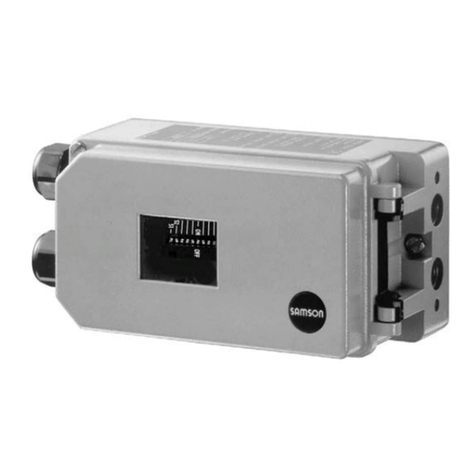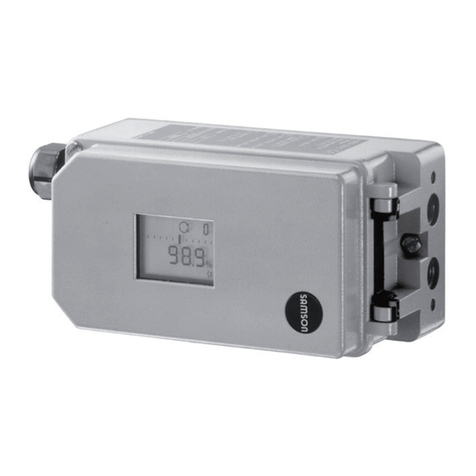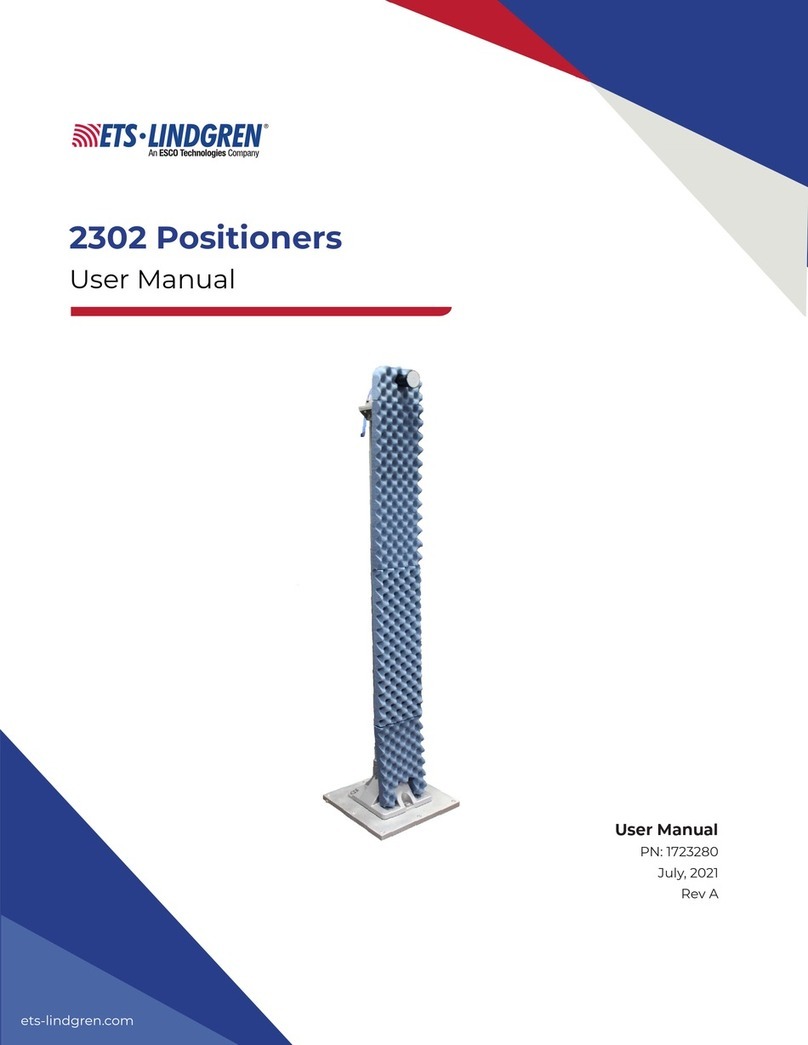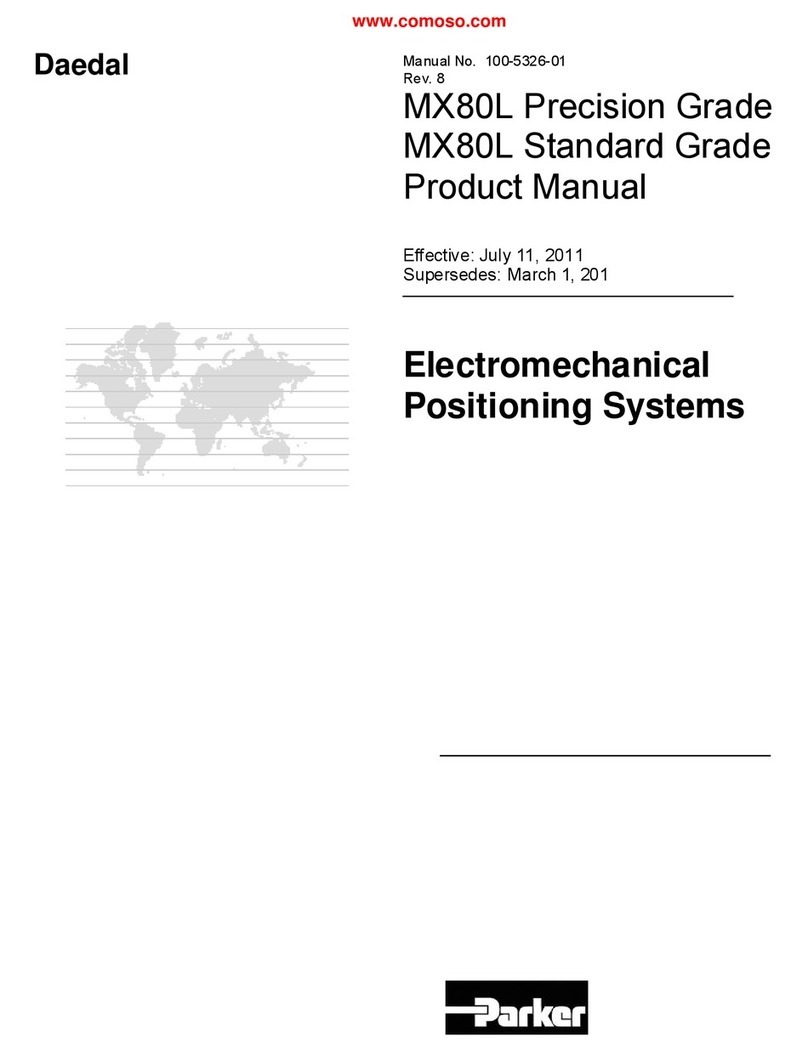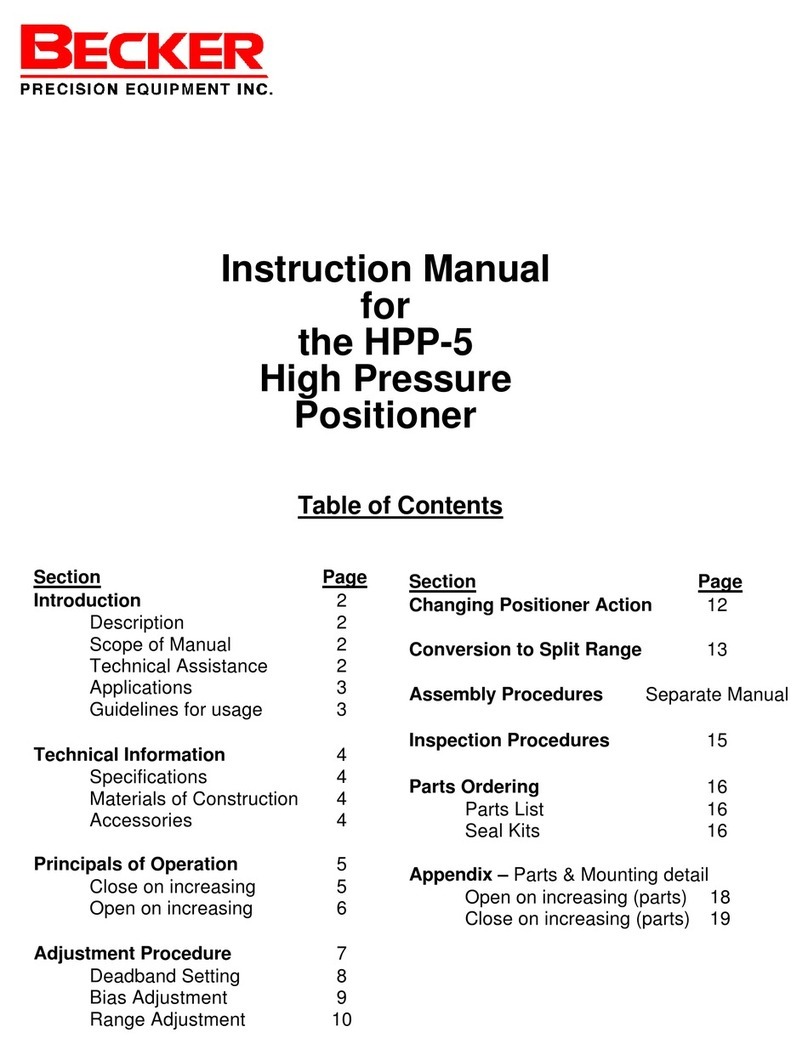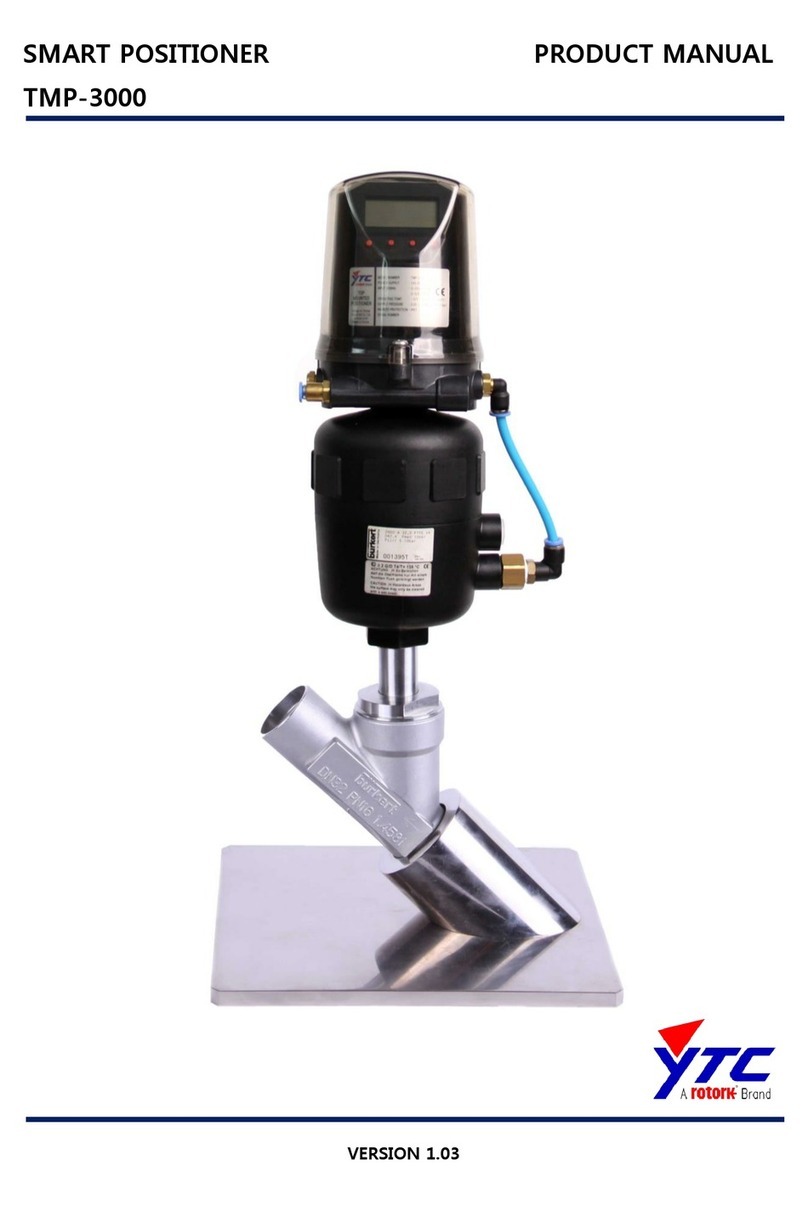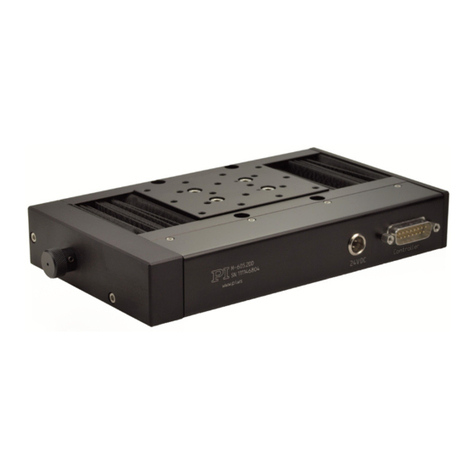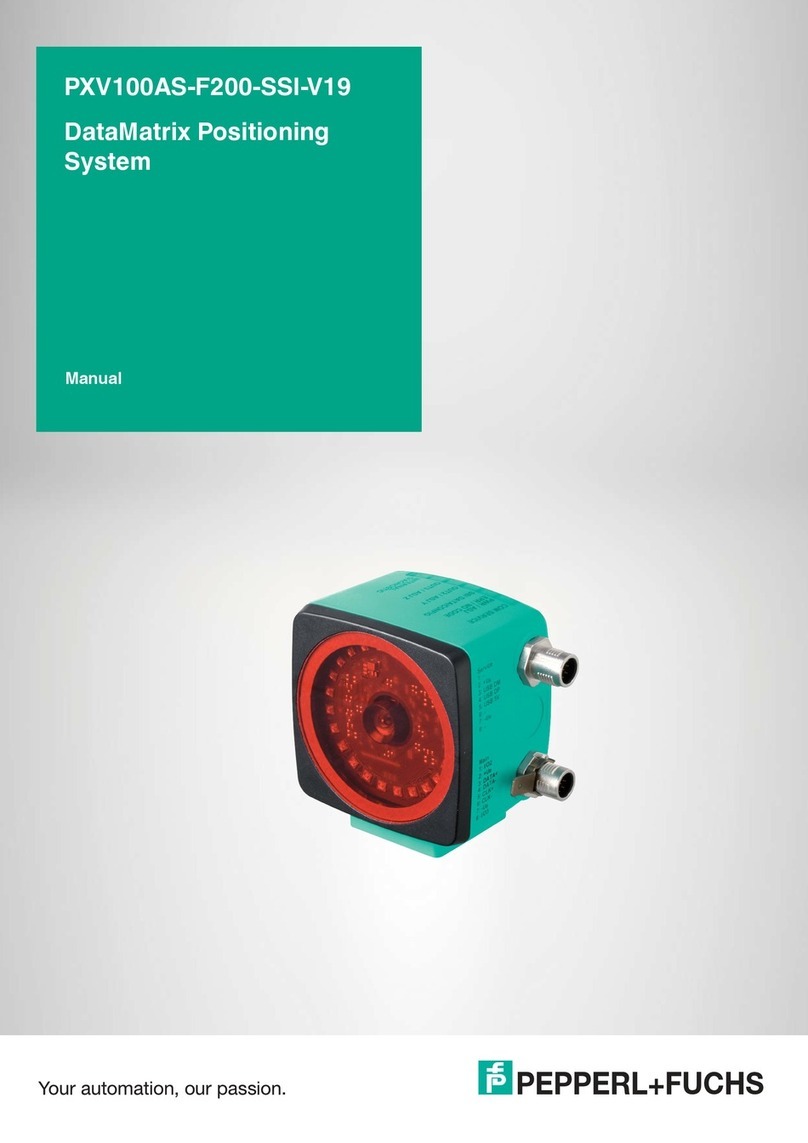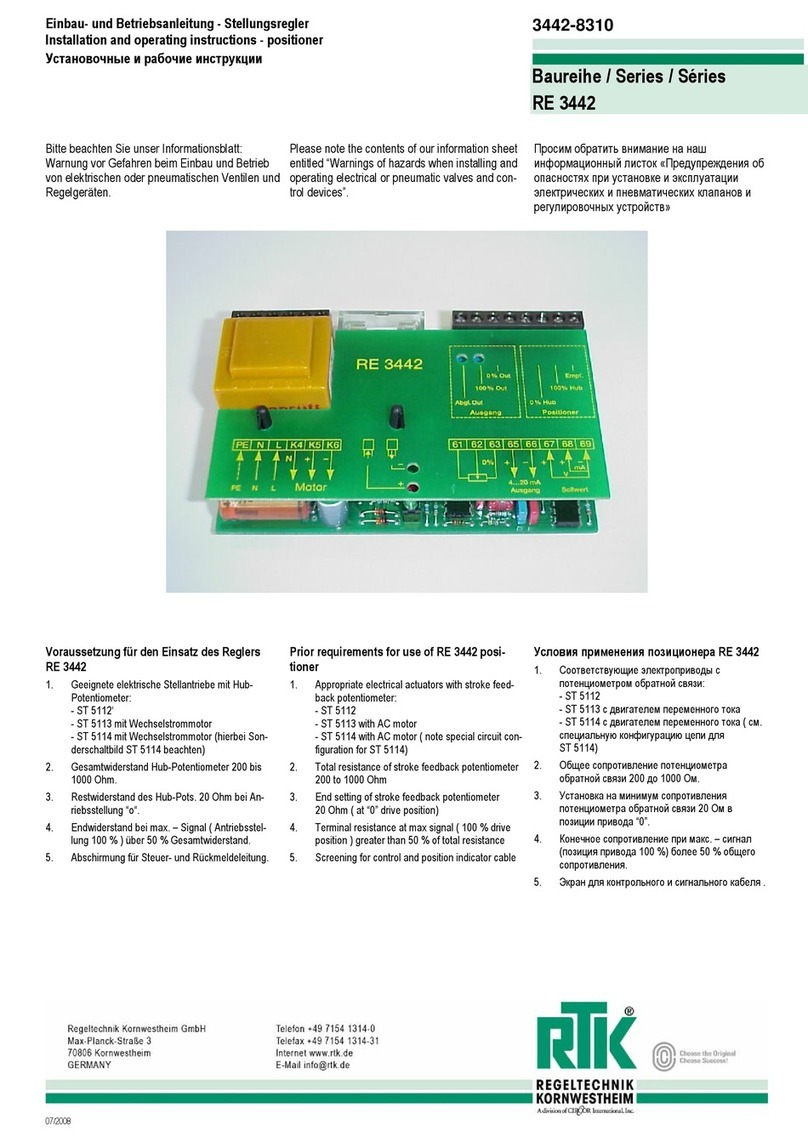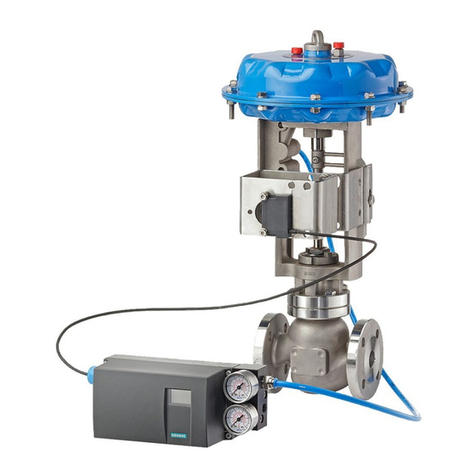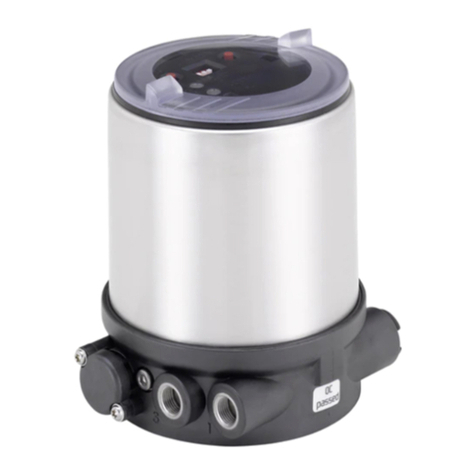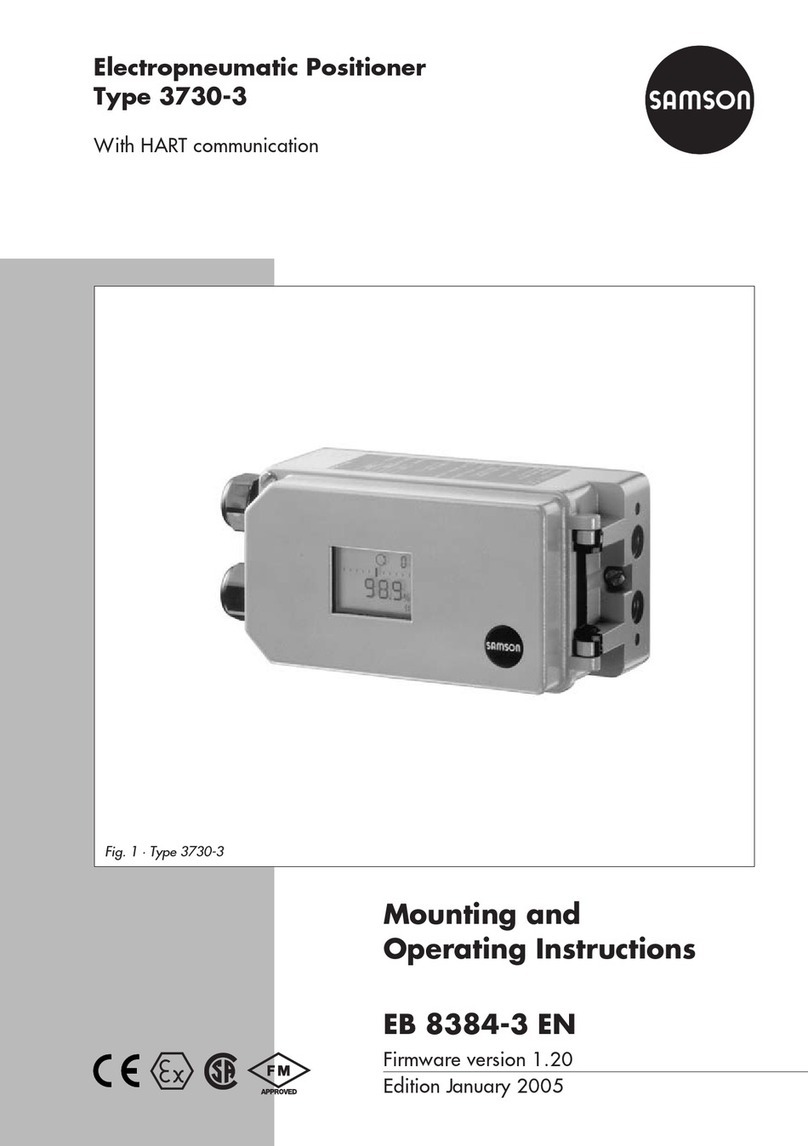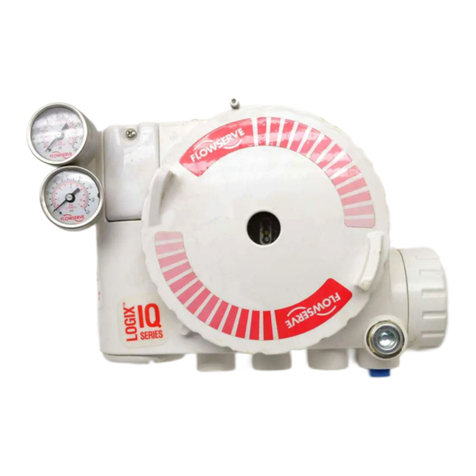
Changing Action of Positioner
To change the positioner from open on in-
creasing signal to close on increasing signal,
or vice versa, the following parts kits must be
ordered:
To change open on increasing to close on in-
creasing: Part #25-1444 plus an Extension
Rod (item #13 in drawing 35-0516, see Table
4). The serial number of the actuator must be
specified. The exact part number of the exten-
sion rod will vary based on the actuator stroke.
To change close on increasing to open on in-
creasing: Part #25-1289. Note: If converting
a close on increasing signal positioner to open
on increasing signal, the wide end of the tube
(item #9) may be shortened by 11/16" with a
hack saw in place of ordering part #25-1289.
The stroke length of the actuator cylinder
MUST be specified when ordering the above
part numbers. If the actuator serial number
cannot be found, the stroke length can be
found in the regulator model number. The
stroke length is the first letter after the "H" in
the model number. For example model
10H12L6FG-SR-S-HSB-40/35-100-O has a
stroke length of "L", or 12 inches ["L" is the
12th letter in the alphabet]).
Refer to the drawings 35-0515 and 35-0516 in
the Appendix for the following:
1. Disconnect all supply lines, instrument
line, and output line from the positioner.
2. Remove the range spring (item #4) at both
ends and those items connecting it to the
rod (item #23) and the positioner feedback
arm.
HPP-SB Positioner
Reversing Action
3. Remove the positioner from the bracket
(item #18). The tubing and fittings on each
side of the positioner must be taken off
and installed in the opposite corner from
their original position (see piping sche-
matic provided by Becker Precision Equip-
ment) then reattached to the positioner.
This will allow the positioner to maintain
the actuator failure mode when the posi-
tioner is turned upside down.
4. Move the bracket assembly (item #18),
tube assembly (items #16 and #17), and
cover plate (item #11) to the positions
shown on the desired drawing.
5. Install the positioner in the opposite of its
original position (upside down if it was
right side up, right side up if it was upside
down).
6. Using parts from the factory kit, assemble
the spring and surrounding hardware ac-
cording to the drawing of the desired con-
figuration. (Note: all original parts may not
be used when converting from close on in-
creasing to open on increasing).
7. The entire bracket assembly (item #18) or
the outer angle may need to be turned up-
side down to accommodate the new spring
height.
8. Reconnect the supply, instrument, and out-
put lines according to piping schematic
supplied.
Note: The flow direction must be maintained
through the positioner bodies when re-piping.
(I.e. the flow [supply or exhaust] moves from
P1 to P2 and P3 to P4).
HPP-SB 9September 1999
